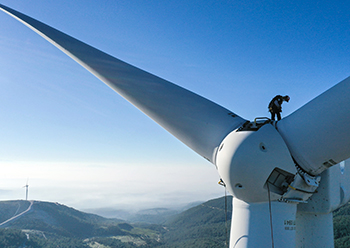
The global connected logistics market size valued at $26.34 billion in 2021 is expected to witness a compound annual growth rate (CAGR) of 13.9 per cent from 2022 to 2030 to reach $83.15 billion, according to a new report by Grand View Research.
The term 'connected logistics' refers to a collection of tools, and platforms, including hardware and software, that enable real-time tracking of commodities sent by land, rail, air, and sea routes.
By sharing data, information, and facts with the supply chain partners, connected logistics has transformed the logistical operations to become more customer-centric. Connected logistics utilises a network of interconnected communication systems, cloud platforms, and IoT technologies to improve the productivity of logistics operations.
MARKET GROWTH & TRENDS
To facilitate shipment, it communicates logistical and pertinent data such as tracking and traceability with every participant in the supply chain, such as manufacturers, suppliers, and customers, among others. By integrating several linked platforms, these solutions aid businesses in enhancing information flow during shipment and delivery using RFID chips. Connected logistics provides improved warehouse management using technologies such as IoT, blockchain, virtual reality, and big data, among others.
Connected logistics has enhanced the efficiency of last-mile delivery with the aid of communication devices and tracking devices. Connected logistics aid in the efficient management of supply chain security, freight traffic, and routing of the fleet by minimizing the cost of the transport. Additionally, technologies such as vibration monitoring and global positing system (GPS) aid in performance optimization and provide position tracking for each fleet vehicle. Connected logistics have significantly improved risk resilience planning.
Thus, increased demand for improved warehouse management and rising demand for efficient supply chain management among others are the factors fueling the growth of the target market. The demand for intelligent transportation solutions is anticipated to rise significantly overall, as well as in the logistics sector. It is expected that logistics 4.0 and ongoing work on autonomous logistics trucks will present lucrative opportunities for the target market's expansion.
Logistics 4.0 uses analytics, data, the internet of things, and automated decision-making solutions to improve operational efficiency and performance. For instance, in April 2022, Daimler trucks, with its independent auxiliary Torc Robotics, started testing their autonomous trucks, which operate on four levels of autonomous driving in the US Additionally, autonomous trucks are increasingly gaining traction across the logistics industry owing to rising shortage of drivers, increased safety and improved efficiency.
The increasing implementation of logistics 4.0 and ongoing efforts to develop autonomous logistics vehicles are predicted to give profitable opportunities for the target market's growth over the forecast period. Additionally, the necessity to reduce the cost of shipping and storage services is propelling the demand for connected logistics products and solutions. The need for intelligent transportation solutions is anticipated to rise significantly. The declining cost of loT sensors and connected logistics hardware is one of the driving factors of the target market growth.
COVID-19 IMPACT
The Covid-19 pandemic led to disruptions in the global supply chains. In addition, the state and federal governments announced the lockdowns and border closures, which halted the shipment of the goods. However, the pandemic accelerated the adoption of technologies such as the IoT, automation, and robotics, among others, in the logistics sector.
Furthermore, there has been a shift from electronic data to app-based interfaces with cloud integration, allowing logistics companies to connect with e-commerce platforms. For instance, according to a survey conducted by Inmarsat, a leader in mobile satellite communications, 90 per cent of the respondents have accelerated the adoption of the IoT due to the Covid-19 pandemic. The market witnessed a slowdown in terms of growth rate in 2020. However, the market picked up as the adoption of technology gained more relevance post the pandemic.
COMPONENT INSIGHTS
Based on components, the market is segmented into hardware, solution, and services. The hardware segment dominated the market in 2021 and is expected to expand at the fastest CAGR during the forecast period. Based on the hardware, the market is further segmented into RFID tags, sensors, communication devices, tracking devices, and others. Due to the increasing demand to track assets, the sensors category is anticipated to witness a significant market share. Additionally, IoT based connected sensing technology aids in preserving temperature stability and reducing food waste while improving supply chain visibility.
REGIONAL INSIGHTS
North America dominated the market in 2021 and Asia Pacific segment is anticipated to register the highest CAGR during the forecast period. The growth can be attributed to the increasing investments in megacity projects in countries such as India and China. Furthermore, the rising technological advancements in transportation and increasing investment in megacity projects are also expected to fuel regional growth over the forecast period. The rapid growth of the e-commerce sector and manufacturing industry in the region is fueling the growth of the target market.


